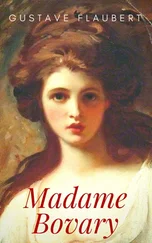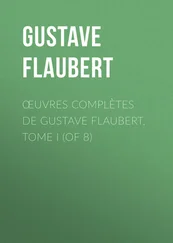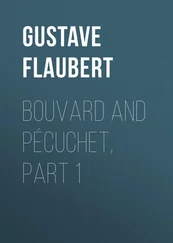Gustave Flaubert - Over Strand and Field - A Record of Travel through Brittany
Здесь есть возможность читать онлайн «Gustave Flaubert - Over Strand and Field - A Record of Travel through Brittany» — ознакомительный отрывок электронной книги совершенно бесплатно, а после прочтения отрывка купить полную версию. В некоторых случаях можно слушать аудио, скачать через торрент в формате fb2 и присутствует краткое содержание. Жанр: foreign_antique, foreign_prose, на английском языке. Описание произведения, (предисловие) а так же отзывы посетителей доступны на портале библиотеки ЛибКат.
- Название:Over Strand and Field: A Record of Travel through Brittany
- Автор:
- Жанр:
- Год:неизвестен
- ISBN:нет данных
- Рейтинг книги:3 / 5. Голосов: 1
-
Избранное:Добавить в избранное
- Отзывы:
-
Ваша оценка:
- 60
- 1
- 2
- 3
- 4
- 5
Over Strand and Field: A Record of Travel through Brittany: краткое содержание, описание и аннотация
Предлагаем к чтению аннотацию, описание, краткое содержание или предисловие (зависит от того, что написал сам автор книги «Over Strand and Field: A Record of Travel through Brittany»). Если вы не нашли необходимую информацию о книге — напишите в комментариях, мы постараемся отыскать её.
Over Strand and Field: A Record of Travel through Brittany — читать онлайн ознакомительный отрывок
Ниже представлен текст книги, разбитый по страницам. Система сохранения места последней прочитанной страницы, позволяет с удобством читать онлайн бесплатно книгу «Over Strand and Field: A Record of Travel through Brittany», без необходимости каждый раз заново искать на чём Вы остановились. Поставьте закладку, и сможете в любой момент перейти на страницу, на которой закончили чтение.
Интервал:
Закладка:
He possessed more than one hundred thousand crowns' worth of furniture; an income of thirty thousand pounds a year, the profits of his fiefs and his salary as field-marshal; fifty magnificently appointed horsemen escorted him. He kept open house, served the rarest viands and the oldest wines at his board, and gave representations of mysteries, as cities used to do when a king was within their gates. When his money gave out, he sold his estates; when those were gone, he looked around for more gold, and when he had destroyed his furnaces, he called on the devil. He wrote him that he would give him all that he possessed, excepting his life and his soul. He made sacrifices, gave alms and instituted ceremonies in his honour. At night, the bleak walls of the castle lighted up by the glare of the torches that flared amid bumpers of rare wines and gipsy jugglers, and blushed hotly under the unceasing breath of magical bellows. The inhabitants invoked the devil, joked with death, murdered children, enjoyed frightful and atrocious pleasures; blood flowed, instruments played, everything echoed with voluptuousness, horror, and madness.
When he expired, four or five damsels had his body removed from the stake, laid out, and taken to the Carmelites, who, after performing the customary services, buried him in state.
On one of the bridges of the Loire, relates Guépin, opposite the Hôtel de la Boule-d'Or, an expiatory monument was erected to his memory. It was a niche containing the statue of the Bonne Vierge de crée lait , who had the power of creating milk in nurses; the good people offered her butter and similar rustic products. The niche still exists, but the statue is gone; the same as at the town-house, where the casket which contained the heart of Queen Anne is also empty. But we did not care to see the casket; we did not even give it a thought. I should have preferred gazing upon the trousers of the marshal of Retz to looking at the heart of Madame Anne de Bretagne.
CHAPTER III.
CARNAC
The field of Carnac is a large, open space where eleven rows of black stones are aligned at symmetrical intervals. They diminish in size as they recede from the ocean. Cambry asserts that there were four thousand of these rocks and Fréminville has counted twelve hundred of them. They are certainly very numerous.
What was their use? Was it a temple?
One day Saint Cornille, pursued along the shore by soldiers, was about to jump into the ocean, when he thought of changing them all into stone, and forthwith the men were petrified. But this explanation was good only for fools, little children, and poets. Other people looked for better reasons.
In the sixteenth century, Olaüs Magnus, archbishop of Upsal (who, banished to Rome, wrote a book on the antiquities of his country that met with widespread success except in his native land, Sweden, where it was not translated), discovered that, when these stones form one long, straight row, they cover the bodies of warriors who died while fighting duels; that those arranged in squares are consecrated to heroes that perished in battle; that those disposed in a circle are family graves, while those that form corners or angular figures are the tombs of horsemen or foot-soldiers, and more especially of those fighters whose party had triumphed. All this is quite clear, but Olaüs Magnus has forgotten to tell us how two cousins who killed each other in a duel on horseback could have been buried. The fact of the duel required that the stones be straight; the relationship required that they be circular; but as the men were horsemen, it seems as if the stones ought to have been arranged squarely, though this rule, it is true, was not formal, as it was applied only to those whose party had triumphed. O good Olaüs Magnus! You must have liked Monte-Pulciano exceeding well! And how many draughts of it did it take for you to acquire all this wonderful knowledge?
According to a certain English doctor named Borlase, who had observed similar stones in Cornouailles, "they buried soldiers there, in the very place where they died." As if, usually, they were carted to the cemetery! And he builds his hypothesis on the following comparison: their graves are on a straight line, like the front of an army on plains that were the scene of some great action.
Then they tried to bring in the Greeks, the Egyptians, and the Cochin Chinese! There is a Karnac in Egypt, they said, and one on the coast of Brittany. Now, it is probable that this Karnac descends from the Egyptian one; it is quite certain! In Egypt they are sphinxes; here they are rocks; but in both instances they are of stone. So it would seem that the Egyptians (who never travelled), came to this coast (of the existence of which they were ignorant), founded a colony (they never founded any), and left these crude statues (they produced such beautiful ones), as a positive proof of their sojourn in this country (which nobody mentions).
People fond of mythology thought them the columns of Hercules; people fond of natural history thought them a representation of the python, because, according to Pausanias, a similar heap of stones, on the road from Thebes to Elissonte, was called "the serpent's head," and especially because the rows of stones at Carnac present the sinuosities of a serpent. People fond of cosmography discovered a zodiac, like M. de Cambry, who recognised in those eleven rows of stones the twelve signs of the zodiac, "for it must be stated," he adds, "that the ancient Gauls had only eleven signs to the zodiac."
Subsequently, a member of the Institute conjectured that it might perhaps be the cemetery of the Venetians, who inhabited Vannes, situated six miles from Carnac, and who founded Venice, as everybody knows. Another man wrote that these Venetians, conquered by Cæsar, erected all those rocks solely in a spirit of humility and in order to honour their victor. But people were getting tired of the cemetery theory, the serpent and the zodiac; they set out again and this time found a Druidic temple.
The few documents that we possess, scattered through Pliny and Dionysius Cassius, agree in stating that the Druids chose dark places for their ceremonies, like the depths of the woods with "their vast silence." And as Carnac is situated on the coast, and surrounded by a barren country, where nothing but these gentlemen's fancies has ever grown, the first grenadier of France, but not, in my estimation, the cleverest man, followed by Pelloutier and by M. Mahé, (canon of the cathedral of Vannes), concluded that it was "a Druidic temple in which political meetings must also have been held."
But all had not been said, and it still remained to be discovered of what use the empty spaces in the rows could have been. "Let us look for the reason, a thing nobody has ever thought of before," cried M. Mahé, and, quoting a sentence from Pomponius Mela: "The Druids teach the nobility many things and instruct them secretly in caves and forests;" and this one from Tucain: "You dwell in tall forests," he reached the conclusion that the Druids not only officiated at the sanctuaries, but that they also lived and taught in them. "So the monument of Carnac being a sanctuary, like the Gallic forests," (O power of induction! where are you leading Father Mahé, canon of Vannes and correspondent of the Academy of Agriculture at Poitiers?), there is reason to believe that the intervals, which break up the rows of stones, held rows of houses where the Druids lived with their families and numerous pupils, and where the heads of the nation, who, on state days, betook themselves to the sanctuary, found comfortable lodgings. Good old Druids! Excellent ecclesiastics! How they have been calumnied! They lived there so righteously with their families and numerous pupils, and even were amiable enough to prepare lodgings for the principals of the nation!
Читать дальшеИнтервал:
Закладка:
Похожие книги на «Over Strand and Field: A Record of Travel through Brittany»
Представляем Вашему вниманию похожие книги на «Over Strand and Field: A Record of Travel through Brittany» списком для выбора. Мы отобрали схожую по названию и смыслу литературу в надежде предоставить читателям больше вариантов отыскать новые, интересные, ещё непрочитанные произведения.
Обсуждение, отзывы о книге «Over Strand and Field: A Record of Travel through Brittany» и просто собственные мнения читателей. Оставьте ваши комментарии, напишите, что Вы думаете о произведении, его смысле или главных героях. Укажите что конкретно понравилось, а что нет, и почему Вы так считаете.












